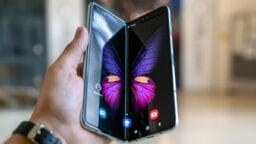Bengaluru Innovates with Magnetic Nanobots to Combat Tooth Sensitivity
For countless individuals, the acute sting of dental sensitivity transforms a mere sip of chilled water into a shocking experience. In a groundbreaking development, researchers from the Indian Institute of Science (IISc), in collaboration with the Bengaluru-based deep-tech startup Theranautilus, have unveiled “CalBots”—magnetic nanobots engineered to address the underlying issues responsible for this common ailment.
According to IISc, these CalBots are minuscule 400-nanometre particles infused with a specialized calcium silicate-based bioceramic formulation. Designed to navigate 500 micrometres into dentinal tubules.
The delicate channels in teeth that connect to nerve endings—these bots, directed by an external magnetic field, can autonomously assemble into robust structures. Cement-like plugs that effectively restore the tooth’s natural protective barrier. Remarkably, a single application promises significant, enduring relief.
Globally, dental hypersensitivity afflicts nearly one in four individuals, manifesting when enamel deteriorates or gum recession occurs, thereby exposing the dentine layer beneath, as stated by IISc. The tubules within the dentine serve as conduits to the nerves, elucidating why even minor temperature variations can elicit painful responses.
“Our goal was to devise a solution that addresses a tangible issue in an unprecedented manner,” explained Shanmukh Peddi, postdoctoral researcher at IISc’s Centre for Nano Science and Engineering (CeNSE) and co-founder of Theranautilus.
The research team employed an entirely novel class of bioceramic cement for these nanobots. While bioceramics have long been utilized in orthopaedics and dentistry, this particular formulation was meticulously designed for hypersensitivity—capable of penetrating deeper and offering prolonged efficacy.
Initial assessments involved testing on extracted human teeth. “We applied CalBots under a magnetic field for 20 minutes, during which they effectively sealed the dentinal tubules by forming stable, deep plugs—an outcome validated through high-resolution imaging,” noted Peddi.
Subsequent trials transitioned to animal studies. “Healthy mice displayed no preference between cold and room temperature water. Conversely, sensitive mice exhibited a complete aversion to cold water. Remarkably, following treatment, they resumed drinking it, reflecting a 100% behavioral recovery. That was a significant achievement for our team,” he added.
The composition of CalBots consists entirely of materials classified as ‘generally recognized as safe’, having successfully passed toxicity evaluations in murine subjects. “This compelling demonstration highlights the potential of nanorobotics to effect transformative advancements in healthcare,” asserted Ambarish Ghosh, professor at CeNSE and a co-author of the study.
Debayan Dasgupta, a former PhD student at CeNSE and co-founder of Theranautilus, perceives this innovation as emblematic of a larger technological evolution.
“We’ve developed a regenerative, active nanomaterial—progressing towards the envisioned concept of ‘tiny mechanical surgeons’, as articulated by Richard Feynman,” he remarked.
Source link: Timesofindia.indiatimes.com.






